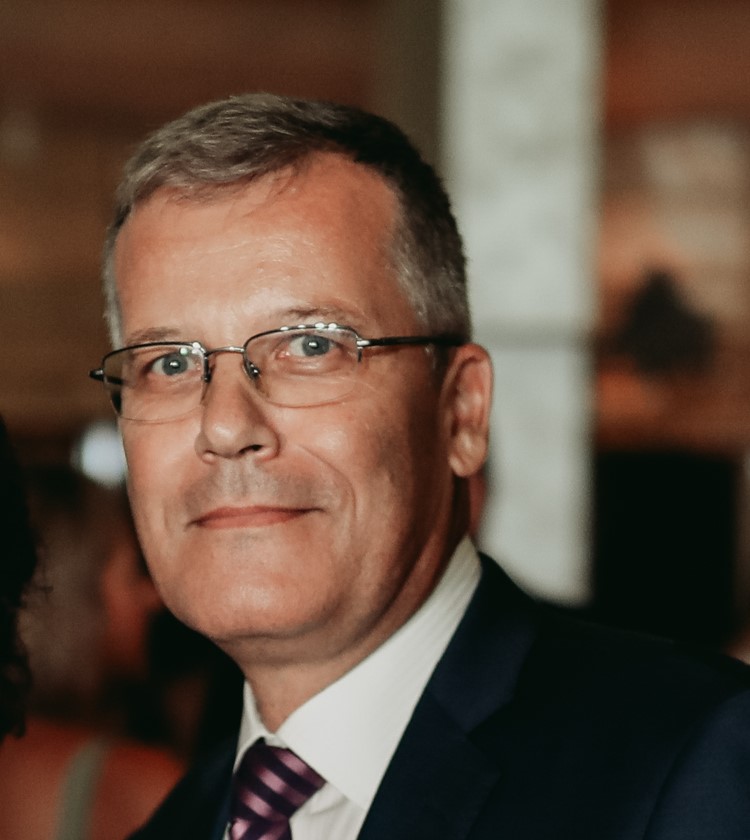
Brigadier General (ret) MEng Ciprian-Mircea RĂDULESCU
17/02/2020 Region: European Union Topic: Military Technologies and Equipment
At the Berlin International Air Show in April 2018, Dassault and Airbus announced the launch of the”Future Combat Air System (FCAS)/ ”Système de combat aérien futur (SCAF)”, which includes a sixth generation combat aircraft, a new generation weapons system and other elements integrated into the operational airspace.
The main element of this system will be the Next Generation Fighter (NGF), to which will be added Remote Carriers and an integrated battlefield management (Combat Cloud).
The initiators of this project, France and Germany, lately joined by Spain, announced the launch of the project at the Le Bourget Air Show (France) in June 2019, when a 1: 1 scale model of the aircraft was presented.
NGF mock-up (Source - John Newton 8 CC BY-SA (https://creativecommons.orglicensesby-sa4.0)
With an initial budget estimated at € 4 billion by 2025, the project will be divided into the following main programs:
- the combat aircraft, developed by Dassault together with Airbus and Thales;
- unmanned aircraft (drones) and rockets, developed by Airbus and MBDA;
- aviation engines, developed by Safran and MTU;
- integration of the combat space and training, developed and coordinated by Airbus and Thales.
The first flight of the experimental model of the fighter jet is planned to take place at the latest in 2026, then in 2040 it will enter into the service of the air forces of the countries participating in the project. It will then replace the Mirage 2000 and Rafale in France, Eurofighter Typhoon in Germany and Spain and F / A-18 in Spain.
The first concrete step in the effective start of the program was taken on February 12, 2020, when the German Parliament approved the amount of €77 million for a first phase, which will allow the initiation of the study for the development of the experimental model. For this phase, France approved the same amount in December 2019, while Spain will present its contribution during the year 2020.
The Brexit Effect
Caught in the midst of the Brexit negotiation process, the United Kingdom was not invited to participate in the project. This decision is no surprise, given the precedent of the Eurofighter program when France left the group due to differences in design and operational requirements of the aircraft.
Feeling left out, the British companies with BAE Systems and Rolls Royce in lead, together with the British Ministry of Defence, launched the “Tempest” project at the Farnborough Air Show in July 2018, as part of their national air combat strategy.
The "Tempest" program aims to replace the Eurofighter Typhoon aircraft after 2040, when they will end their service in the Royal Air Force and, at the same time, build a fighter plane that is complementary to the F-35 aircraft.
The program was joined by Italy (another member of the Eurofighter group who was not invited to the FCAS project) and Sweden.
Cooperation or Competition - European and Possibly, Transatlantic?
Even if the two projects for the development of a sixth generation aircraft are almost identical conceptually, the history of the Eurofighter program seems to be repeating itself and Europe is about to dissipate its efforts instead of uniting them.
Military analysts believe that the "Tempest" program will not be fully funded by the British government - which intends to reduce military spending by £15 billion after Brexit - and will have to merge, eventually, with the FCAS program led by France. However, it is estimated that the longer this merger will be delayed, the more difficult the integration will be. At the same time, British companies have announced that they will not get involved in a project in which they will play a secondary role.
In turn, the French and German companies want to limit as much as possible the participation of other states in the project, at least in the development phase (when the technical-tactical characteristics and the main capabilities will be established) and the beginning of the work on the experimental model. The explanation offered for this approach is the experience with the A400M transport aircraft, when the desire of each of the participating parties to impose certain characteristics has led to delays in the program and escalation of costs.
There were disagreements even between French and German partners, on who would lead the development of the engines. The German side is unhappy with its role and wants a renegotiation of the joint venture agreement between the two companies involved in this project program: Safran (France) and MTU (Germany).
Germany has another dissatisfaction, namely that France has de facto taken over the leadership of the FCAS project. That is why, when the Bundestag approved the funds for the first phase of the project, it also put another condition: in parallel to start the project of the new European battle tank, known as Main Ground Combat System - MGCS, in which Germany would play the leading role, and the program to advance at the same pace as the fighter plane.
The FCAS program, whose total value is estimated at €100 billion, aims to boost the European defence industry and could be an alternative to the F-35 Lightening aircraft, especially regarding the implicit integration of connectivity and interoperability with other systems in the battlefield, which is the main difference from the fifth generation aircraft.
F-35A Lightening II - Source:
Matti Blume / CC BY-SA (https://creativecommons.org/licenses/by-sa/4.0)
In the context of
Washington's increasingly frequent criticism over the Europeans' contribution
to NATO military spending and their dependence on US capabilities, the
Franco-German initiative seems to signal the intent to prove the opposite,
while also being part of the European military transformation effort of the
North Atlantic Alliance.